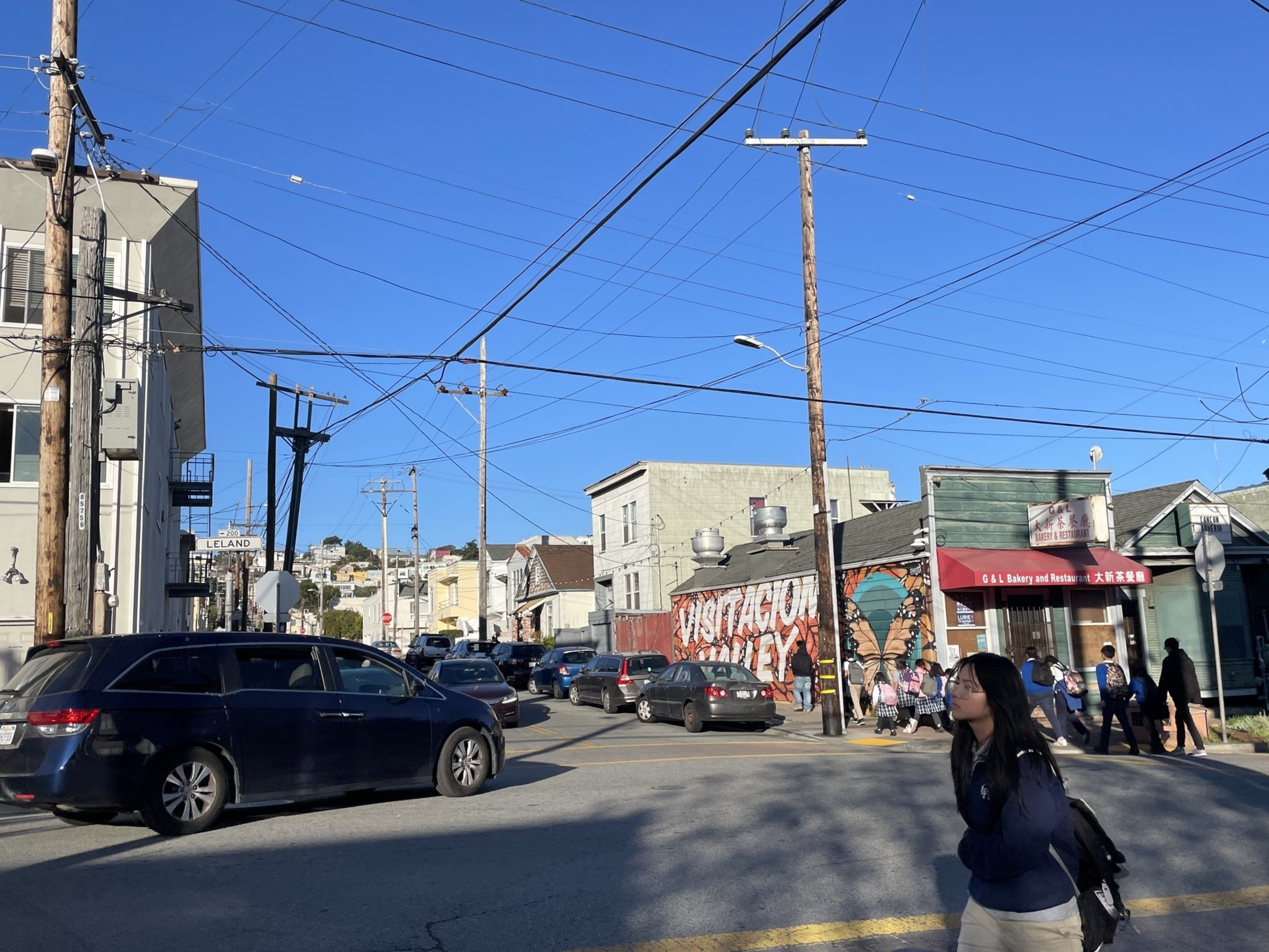You won’t see any Trump signs, but Republican voters are easy to find in the city’s southeastern neighborhoods. And after this past election, it’s easier than ever.
Voters in Visitacion Valley and Portola — the two neighborhoods that broke most strongly for Donald Trump in the 2024 presidential election — chalked up their support to a now-familiar litany of concerns, from immigration and inflation to questions over Kamala Harris’ experience and agenda. The two neighborhoods sit among a cluster of predominantly working-class parts of the city.
While these neighborhoods have leaned more Republican than the rest of the city in past presidential elections, in Visitacion Valley around 34% of voters supported Trump this year — up roughly 10 percentage points (opens in new tab) from four years ago.
That may not sound like much, but it contrasts greatly with liberal San Francisco, which saw slightly more than 16% of votes (opens in new tab) go to Trump. (During the 2020 presidential election, only 12.7% citywide (opens in new tab) voted for him.) Vice President Kamala Harris saw the greatest support in the Castro, at 93%, according to city election data.
“I’m looking for someone who can make our country better, compared to other countries,” 61-year-old Trump supporter Jane told The Standard from her Visitacion Valley home.
San Francisco Trump voters who spoke with The Standard declined to share their full names, either out of fear of retaliation from neighbors or due to general privacy concerns.
The trend is part of a national shift among working-class and immigrant voters, who have increasingly embraced (opens in new tab) the Republican Party.
For many in these neighborhoods — where support for Trump grew markedly — inflation, immigration, and crime are top concerns that drove them to vote Republican.
Jane, who works downtown as a financial analyst, said she voted for Trump because of concerns over public safety, rising prices for groceries, and health insurance (opens in new tab). She said she didn’t know enough about Harris and felt more secure voting for Trump because he’s been president before.
“I just didn’t know about Kamala before she ran for president,” Jane said. “Trump has the experience.”
The 94134 zip code, which includes Portola and Visitacion Valley, has a median household income of $104,247, which is considered low (opens in new tab) in San Francisco, and more than half its residents speak Asian and Pacific Islander languages at home, according to census data (opens in new tab).
Even though he couldn’t vote, 23-year-old green card holder Carlos Crespo said it makes sense that Trump earned more support in Visitacion Valley, pointing to how working-class immigrant households have been hit hard by inflation since the pandemic.
“People aren’t thinking about the economic factors,” Crespo said. “They’re just thinking, ‘Oh, I was making more money before.’”

Crespo, who works at La Joya Cafe on Leland Avenue, thinks illegal immigration is not a top issue in the neighborhood, unlike other parts of the country where voters supported Trump. He said people are sympathetic to undocumented immigrants who’ve come to the United States to make more money but can’t afford to go through the legal process.
“People feel common ground on immigration,” Crespo said. “No one wants to be an illegal immigrant, but the process is broken.”
But that sentiment isn’t true for retired registered nurse Rob, who lives in Portola. He supports Trump because of concerns over immigration and inflation and was skeptical of Harris.
“I didn’t know what her views were,” the 73-year-old homeowner said. “She held no press conferences.” Harris has been criticized for not sharing policy plans soon enough; she added details on her campaign website on the eve of her debate (opens in new tab) against Trump.

Rob criticized her for having “flip-flopped” on fracking after her 2020 run for president, when she opposed it, with “no explanation,” and for not taking a position on California’s Proposition 36, which sought to toughen penalties for shoplifters and passed with overwhelming support.
“I think she’s an empty suit, albeit a pantsuit, who wants power and wants to retain it,” Rob said. “I don’t think she has an agenda.”
Neither Jane nor Rob was surprised by their neighborhoods being among the Trumpiest in San Francisco.
“The issues that matter to them, quality-of-life issues, are the most important to people here,” Rob said, referring to Portola’s diverse, working-class population.
SF Republican Party Chairman John Dennis said it’s no surprise that the city’s lower-income neighborhoods increasingly embraced Trump. Inflation has emptied residents’ wallets, and they feel they have to compete with undocumented immigrants for lower-wage jobs, Dennis said.
It’s all part of a broader shift in Republican supporters away from the wealthy Marina District and toward working-class San Franciscans, he added. San Francisco Republican voter registration increased from 6.5% in 2019 to 7.6% in 2024, Dennis said, and many Asian American people registered as Republicans during the spring. The total number of registered Republicans in the city was 39,539 as of Thursday, up from 32,428 on the same date four years ago.
“This is the Trump realignment,” Dennis said.
Noah Baustin contributed reporting.
